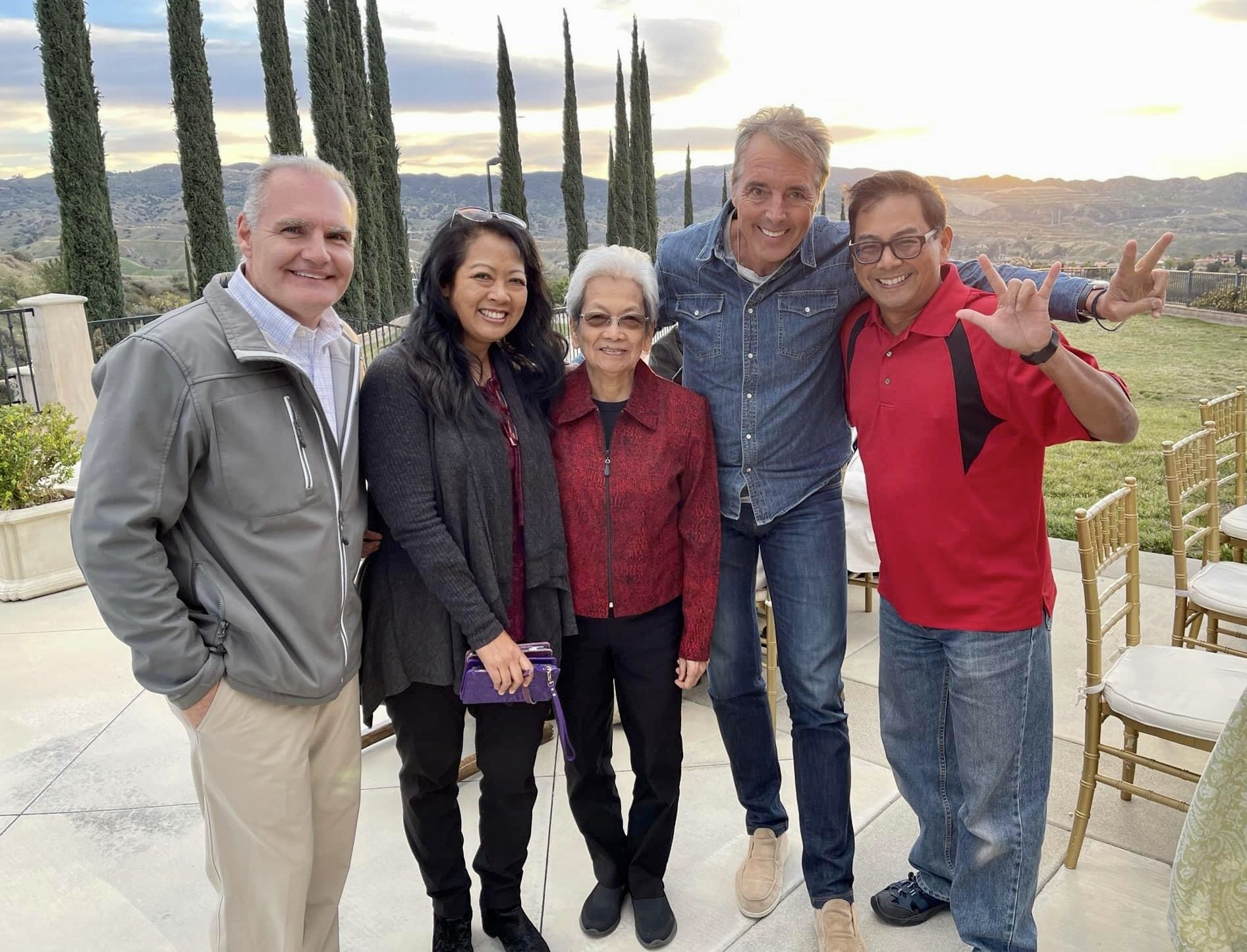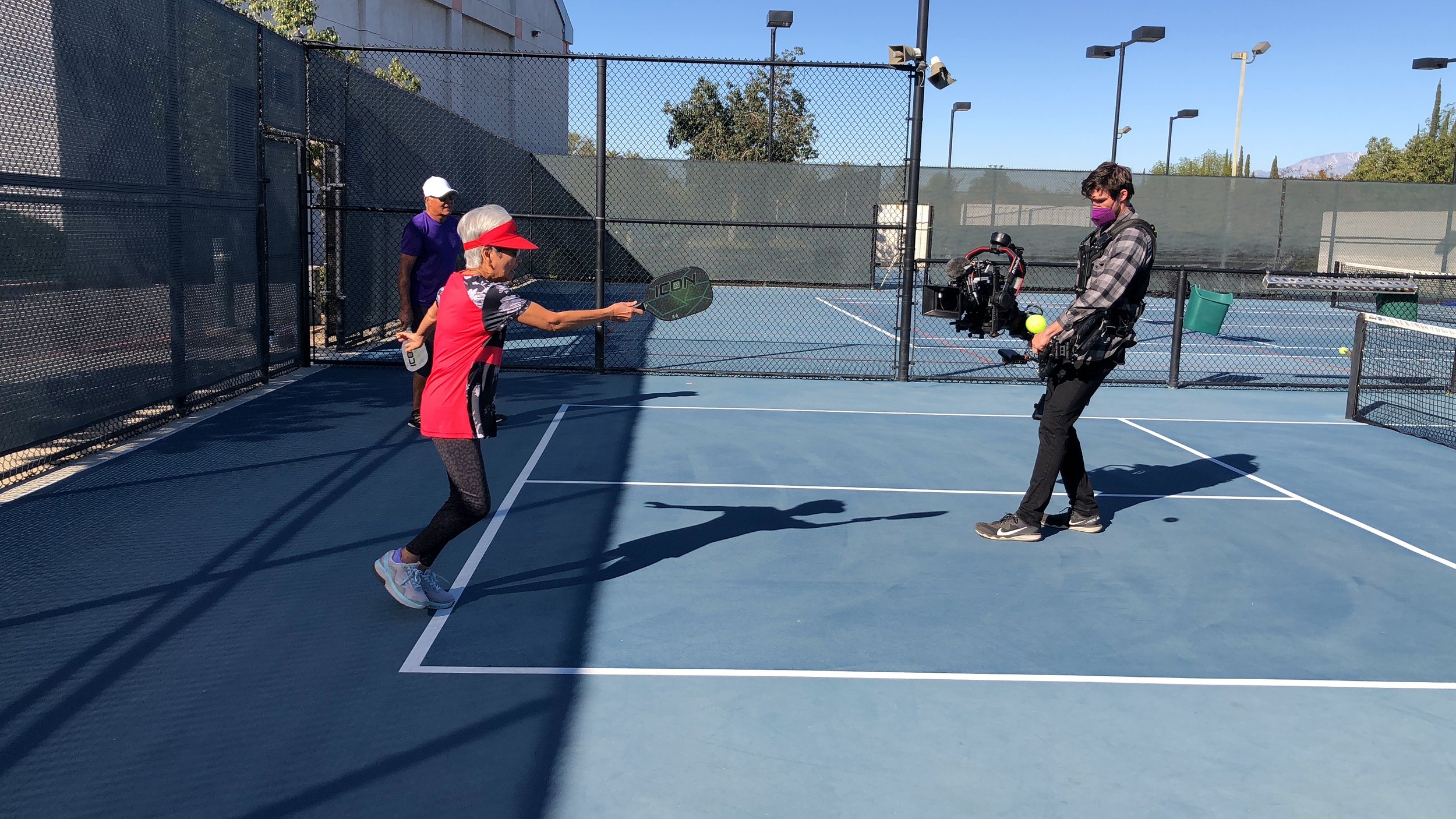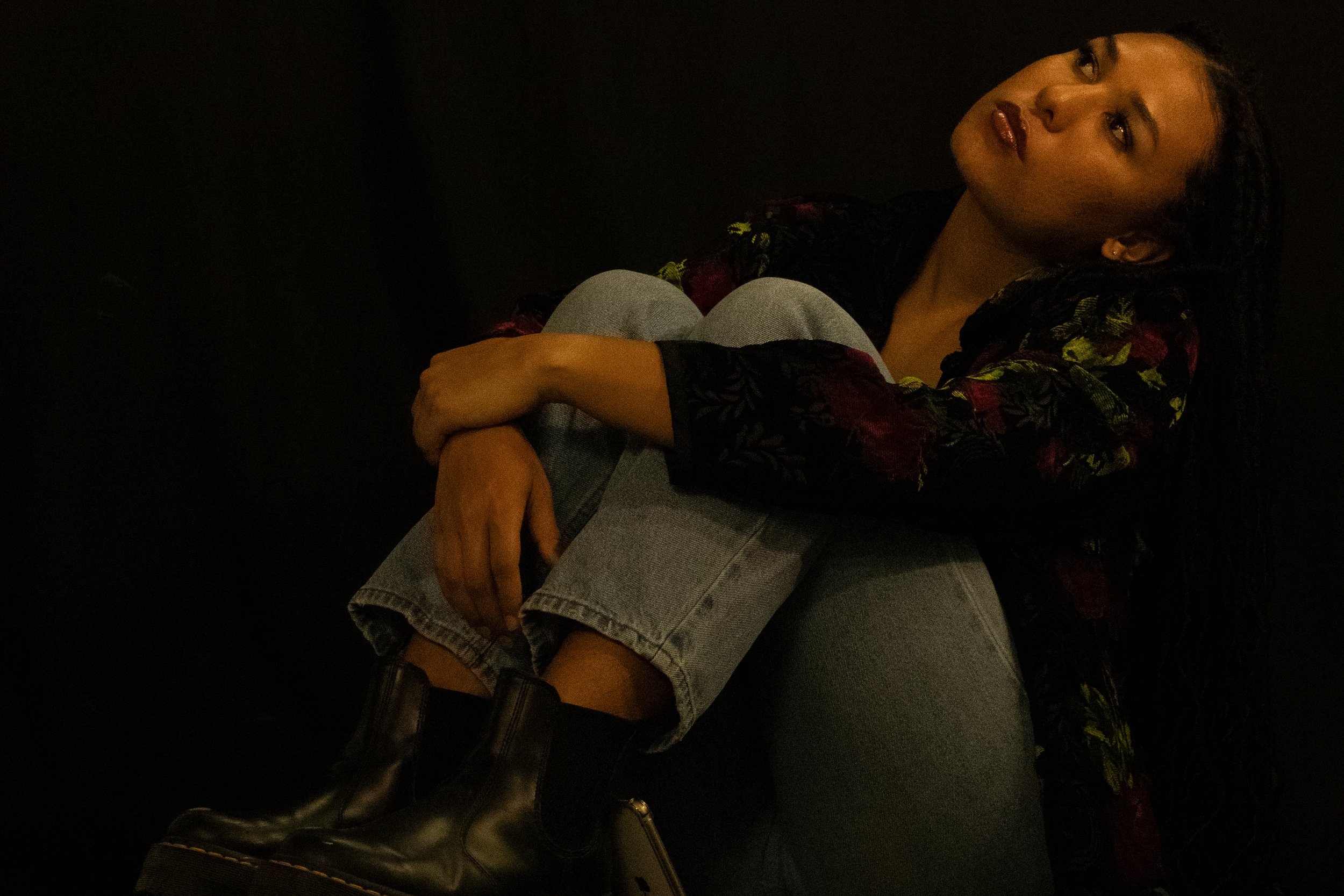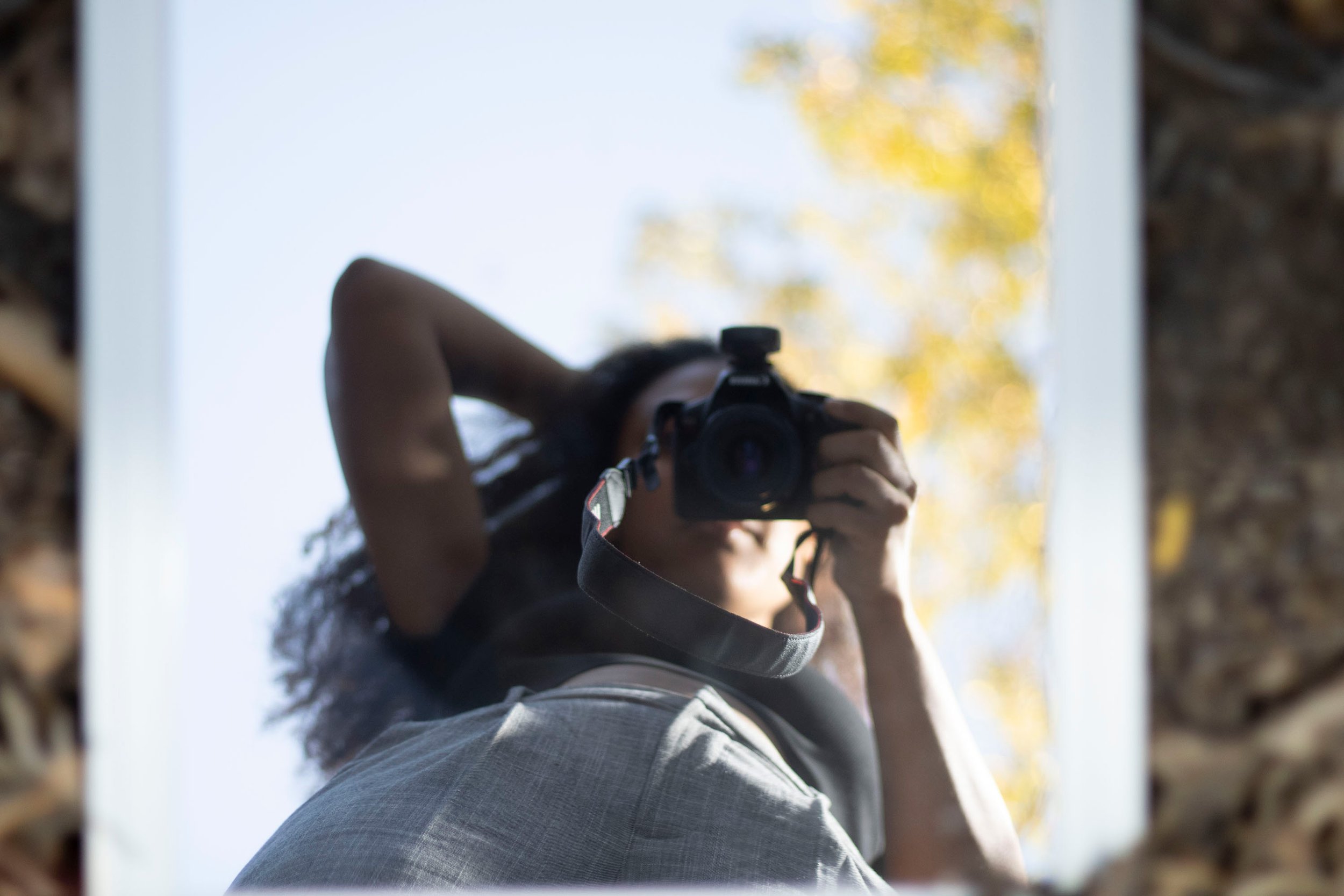Arts and Entertainment
Riverside Announces “Little Nebraska”
By: Annika Cambigue, Union College
The city of Riverside announced last week that one block of downtown will be razed and converted into “Little Nebraska.” The city hopes the dramatic move will allow researchers to discover and synthesize the elusive concept of “Nebraska Nice.”
The city councilperson spearheading the project refused to share their identity, only communicating through a complex series of clues. However, they did share the catalyst behind the Little Nebraska project:
“Last winter, I attended my fourth cousin’s wedding in Lincoln, Nebraska, and was surprised by how friendly the locals were to me. They called the attitude “Nebraska nice.” I thought to myself, ‘I’ve got to bring this back to California. If I could get a team of R & D scientists working on this, we could completely revolutionize the industry!’”
The councilperson refused to name the industry to which they were referring.
The Little Nebraska development will include replicas of Nebraska’s best-known features, including a scale model of the governor’s hog farm, a “corn labyrinth” and a big empty field. Little Nebraska will also include a Runza restaurant, although, in deference to local tastes, the traditional meat-filled runzas will be stuffed with plant alternatives. Consumers should note that while the calorie count will not change, the sodium content certainly will.
Sources at City Hall state that a replica of the famous Nebraskan monument, Carhenge, is in the planning stages. However, it has been delayed by California’s strict emissions standards, which seem to apply even if the cars in question are to be gutted and stacked in sarsens and lintels. An alternative plan to use electric vehicles is in the works.
Not only will the “corn labyrinth” entrance and ensorcell Riverside locals, but it will also play a key role at the annual Little Nebraska Harvest Festival, where corn will be harvested and served. Attendees can expect to “experience corn like never before,” according to the anonymous councilperson. “We feel that the secret to ‘Nebraska nice’ might be in the corn. It definitely has to be hidden in something the Inland Empire doesn’t have a lot of.”
While Riverside residents are excited about Little Nebraska, Nebraskans are confused. A Scotts Bluff local said, “If they’re trying to do iconic Nebraskan stuff, why are they focusing so much on the corn? I mean, like half of the states export corn; it’s really not just a Nebraska thing. Where’s the Niobrara River, Chimney Rock, the sandhill cranes, or the hundreds of mammoth skeletons we’ve unearthed? I feel like nobody talks about our mammoths.”
One Omaha resident was shocked that Californians were suddenly interested in their home. “I’ve been trying to get out of this state for 37 years,” they said. “Like our tourism board says, ‘Honestly, it’s not for everyone.’”
This piece was written as part of the first annual Satire Swap between Seventh-day Adventist university student newspapers. Union College’s newspaper, The Clocktower, wrote this piece for La Sierra University’s The Criterion.
To learn more about Nebraska, check out other articles from The Clocktower.
To read other pieces in this series, click below:
Art + Design Exhibitions: What’s New at the Brandstater Gallery?
By Quinn McFarland
At La Sierra University, the Art + Design department houses the unique Brandstater Gallery. Directed by Tim Musso, this gallery features student, faculty and staff shows, as well as special exhibitions from a wide variety of artists. Oftentimes, after-hours receptions follow these art shows, which gives the campus and the surrounding community an opportunity to view the special show and listen to the artist discuss their work on a panel. This quarter, the Brandstater Gallery hosted graphic artist Nate Reifke’s commercial designs in addition to a group ceramic show featuring works from Jonathan Cross, Brittany Mojo, and Amelia Lockwood.
From Jan. 16 to Feb. 8, Reifke featured his commercial designs in his debut art show titled “Don’t Stop: 25 Years in Illustration and Design.” With a collection of over 300 sketches, t-shirts, posters, skateboards, labels and more, Reifke celebrated his 25th year in the graphic design and illustration industry.
Reifke entered the art and design world while studying for his bachelor’s degree in communication and visual art at the University of California San Diego. In 2010, he created his own company, Salty Timbers, where he has been creating illustrations for various action sports and outdoor markets since. Some of the organizations he has designed for include Patagonia, the San Diego Zoo, and Sector 9 Skateboards. In celebration of a quarter century career in the arts, Reifke showcased past designs, including stickers, which attendees received at the Feb. 4 artist reception.
Reifke tends to work with “good old fashioned pen and paper” when illustrating; his exhibit evidenced this as the majority of his sketches on display were done with ink on paper. As Reifke screen prints a majority of his work, however, he has started working digitally to speed up his process and maintain the cleanliness of the design.
During his artist talk, Reifke noted that he does not exhibit his work often. Due to the nature of creating designs for a larger company, his name is not typically attached to his work. However, many people have seen and interacted with his designs. Some viewers even found out that their first skateboard was designed by Reifke. Additionally, he hoped that having more commercial art on display would encourage viewers to think a little more about the artists behind products.
While Reifke’s exhibit was the first graphic artist show on campus, another installation was one of the first ceramic artist group shows. From Feb. 20 to March 14, the Brandstater Gallery presented three ceramic artists’ sculptures in the show titled “2000° Experiments.” Art curator Timothy LeBlanc gathered pieces from Cross, Mojo, and Lockwood. While the ceramic medium stayed consistent across the pieces, the works showcased many differences in design.
On Feb. 25, LeBlanc hosted an artist reception and panel at the gallery. Cross was the only artist present to discuss his artwork, but LeBlanc provided background information on the other two artists, as well as photos of their studio and works in progress. LeBlanc also commented on Cross’s work, stating that each piece weighed 250 to 300 pounds each. Cross elaborated that his technique is “subtractive,” meaning that he starts with a rather large chunk of clay that he carves his design out of. Some of his favorite tools included a chisel, butcher’s knife and machete.
Additionally, Cross uses a wood fire kiln and the ash from the burned wood to create a glaze on his pieces. Depending on how the ash lands on the clay and where the clay piece is placed inside the kiln, each piece has a different reaction, and thus a different design. Cross fired different pieces of one of his larger works on display separately so that when he eventually combined these pieces, the color of each section differed from the next.
Cross is particularly interested in how his work functions in the way he and other people might use them. As a reference, he lit incense in a small burner that was a part of his show, filling the gallery with an intense aroma. However, he explained that many people who purchase a piece like that from him use it for objects like tea lights or fake candles instead of incense. Additionally, he emphasized that art does have a function; whether it is a ceramic cup or a pillar, it is all equally important. Therefore, Cross creates each piece with the same intent.
From Reifke’s first solo show, presenting a vast collection of commercial art, to Cross, Mojo, and Lockwood’s ceramic sculpture installations, this quarter has been extremely eventful for Brandstater Gallery. These art shows showcase the wide variety of art and art styles, as well as what’s new in the art world. Traditional museum spaces may begin to represent more graphic artists. Furthermore, new waves of innovation may develop as artists are encouraged to try new techniques. Look out for what art installations the Brandstater Gallery will present spring quarter!
For more information, see these links below:
Reifke Website: https://www.saltytimbers.com/
Reifke Instagram: https://www.instagram.com/saltytimbers/
Mojo Website: https://www.brittanymojo.com/
Mojo Instagram: https://www.instagram.com/brittanymojo/
Lockwood Instagram: https://www.instagram.com/amelia.loucoco/
Cross Website: https://www.jonathancrossstudio.com/
Cross Instagram: https://www.instagram.com/jcrossstudio/
Additional Reading: https://lasierra.edu/article/artist-reifke-presents-300-piece-design-show-at-brandstater-gallery/
“Unlocking Netflix’s Blue Zone Journey: Live to 100”
By: Rachel Baez
“Live to 100: Secrets of the Blue Zones” is a Netflix documentary series exploring the longevity of people living in blue zones around the world. Blue zones refer to regions around the world where people tend to live much longer and healthier lives, often exceeding 100 years of age, and are characterized by certain lifestyle and environmental factors conducive to longevity. Each episode delves into the unique lifestyle habits and cultural practices of these regions. Through interviews with various people within the community, the series uncovers key factors contributing to their longevity, such as diet, physical activity, social connections and a sense of purpose.
The second episode of “Live to 100: Secrets of the Blue Zones,” focuses on two unique locales: Sardinia, Italy and Loma Linda, Calif. Sardinia offers insights into a lifestyle that is deeply rooted in harmony with nature and close-knit community bonds. Here, work and leisure seamlessly intertwine, fostering a sense of purpose and belonging. Social connections run deep, contributing to the longevity of Sardinia’s residents. Similarly, Loma Linda emphasizes the significance of purposeful living, maintaining a peaceful lifestyle and building strong community ties.
In a brief segment of episode two, Loma Linda local, Dr. Loida Medina provided insight into the lifestyles of Loma Linda residents that factor into its blue zone status. Her lifestyle choices mirror the community’s health practices, including a healthy diet that emphasizes plant-based foods, and avoiding processed or chemically enhanced foods. Other practices she incorporates are pure water hydration, regular outdoor exercise and adequate sleep. Finally, she values a sense of purpose, family unity and observation of a restful period, like the Sabbath, for spiritual and physical rejuvenation.
This lifestyle wasn’t always how it was for Medina. Medina also touched on her adjustment to the specific traditions of the community. Upon discovering elevated lipid levels in her own health, she enrolled in a 10-day wellness program and witnessed significant improvements in her well-being. Inspired by this experience, she then made lifestyle adjustments, unknowingly aligning with the local blue zone principles. She developed a love for pickleball and engaged in tournaments, bringing active intentionality to her lifestyle. Her involvement in the blue zone research project underscores her dedication to health and longevity. Medina is grateful for the opportunity to share these health practices.
The exploration of blue zones uncovers some factors of living a longer and healthier life. From Sardinia's connection to nature to Loma Linda's sense of purpose and community, these regions demonstrate the impact of simple lifestyle choice. Medina's story is a testament to this, showing us the power of healthy habits and gaining a sense of purpose. Awareness of these blue zone health factors can benefit those seeking change in their lifestyles to support their long-term health.
BLACK UNDERGROUND ARTISTS
BY: mk palaris
Within the cultural hotspot of Southern California, a myriad of Black artists surface with stories of resilience and innovation through mediums such as visual art, melody and movement. These diverse artists contribute to a mosaic of cultural richness, leaving a profound mark on the community. So in honor of Black History month, this article aims to highlight the achievements of local Black artists.
Among these many artists is La Sierra University senior Sarai Ponkratjeva, a graphic design major, whose projects focus on visual arts, such as photography. She takes great inspiration from her grandmother, who navigated through the challenges of growing up in the Jim Crow era. As a result, her artistic endeavors center on themes of Black beauty, femininity and nature. “My grandma, growing up, her skin tone and her features weren't conventionally attractive and not represented in the media,” Ponkratjeva said. “She has always made sure to really talk about the importance of lifting other Black women up, because of her past experiences.”
Ponkratjeva’s photography magazine, titled “What is it that you love?,” visually explores individuals’ cherished aspects of life. One of her photoshoots, titled “Strength,” pays homage to the 1960s cultural movement, Black is Beautiful, which aimed to uplift Black features and celebrate the beauty and diversity of the Black community. “My friend Deborah wore her hair out in an afro and I photographed her. Through that, she represented strength and beauty, especially as a Black woman,” Ponkratjeva said. ”I just wanted to emphasize her hair and her features.”
Using various individuals like her siblings and friends as her muse, Ponkratjeva said that her photoshoots aim to highlight the diversity at the La Sierra University campus. She underlines the importance of diversity in artistic media, saying that it can boost confidence in one's ethnic background. “Just like being able to see yourself and see beautiful art, it makes you feel good about yourself honestly,” she said. “At least for me personally, seeing other people that look like me, it doesn't make me want to change. It makes me embrace myself more.”
While passionate about her craft, Ponkratjeva faces hurdles in the art scene, particularly due to the level of vulnerability needed for the creative process. “An insecurity I have is that other people wouldn't be interested in [my art] because of the subject matter; because it's definitely something that's personal, I worry how other people are going to perceive it,” she said. But despite these challenges, she has set goals to put herself out there and has high hopes for the future of Black artists.
“I’m kind of optimistic. I feel like people are being really receptive of Black artists and the art they create, at least in the spaces I’ve been in,” Ponkratjeva said. “I feel like more people are really appreciating it and highlighting Black artists.”
Shifting to the music scene, sophomore Calla Morgan, a music major with an emphasis in studio jazz guitar, adds her own melody to the mix of underground Black artists. Morgan, a singer-songwriter and guitarist, composes and produces her music. She uses Spotify to share her music. Her work hones in on her personal experiences in life, or whatever comes to mind throughout her creative process.
Morgan advocates for encouraging women in the music industry, especially female instrumentalists who are often left out of the limelight. She draws influence from singer-songwriter Tori Kelly and various Black R&B artists. “I feel like sometimes people don't expect me to be able to play guitar and to sing at the same time,” Morgan said. “I take it as a privilege to be able to represent it, to be something new that people don't really see too often.”
To share her music with the community, Morgan has been publishing her songs, promoting her work on social media under @calla_morgan, and performing live gigs. Through networking, Morgan has formed her own community in Los Angeles. “I've definitely been scared out of my mind, nervous to meet people, but in [playing live], I've met some really amazing people who I've been fortunate enough to form my own circle with,” she said.
This year, Morgan aims to release around six singles and start establishing her own shows. To support aspiring Black artists, she hopes that listeners will stream and share songs from local artists, and buy tickets to their shows. She said, “Just show as much support as you can, whether that means reposting or just telling them, ‘Hey, I really love your music.’ Because it's an amazing feeling when your community shows support like that.”
As these students break barriers and celebrate diversity, they pave the way for others, inspiring a new era of creativity and inclusivity in the community.
Quiet Curiosity and Courage: The Story of Three Black Inventors
BY: Eddie Nguyen
Driven by the American Industrial Revolution, the United States saw a boom in technological advancements over the past century, which was crucial in shaping the modern American way of life. At the spearhead of these advancements were the monumental, often thankless, efforts of African-American creators.
Mark Dean is an African-American computer engineer who made his mark at the International Business Machines Corporation (IBM), leading the design team that made the world’s first one-gigahertz computer processor chip in 1999. This invention was a breakthrough in modern computing as it showed potential for ultrafast computing in micro-chip form. Previously, computer chips had only been capable of running at about half this speed, making them slow and limiting their scope of use. Since then, modern computers have tripled or quadrupled this number, allowing them to be capable of performing complex tasks such as machine learning or playing video games. If not for Dean’s invention, the digital and physical world that now heavily relies on it would be running at half-speed.
The world would not be quite as safe without Marie Van Brittan Brown and her invention of the modern home security system. Living in an unsafe neighborhood, Brown was no stranger to the threat of home invasions. She, therefore, devised her own solution in 1966: a security system that would allow her to monitor her doorway, speak to visitors at a safe distance, and contact the police with the push of a button. This clever system would eventually develop into modern-day closed-circuit television (CCTV), which has revolutionized public security. Nearly 60 years later, the principle of remote monitoring is still employed in modern home security systems.
Another African-American inventor who contributed to modern-day safety was Garrett Morgan. After seeing a horrible car crash at an intersection, Morgan created an early version of a traffic light in 1923 that would go on to help save countless lives. Prior to his invention, drivers would yell and use hand signals to communicate with one another. This created an insurmountable number of problems and made driving extremely dangerous. Heralded as “the Black Edison,” Morgan was also responsible for creating an early version of the gas mask, which he began selling nationwide in 1914. As he knew the device would not be received well if its purchasers knew he was Black, he resigned to demonstrating the device using hired white actors. Despite this prejudice, his “safety hood” device was widely popular and went on to save the lives of millions.
The lives of these indispensable inventors have been woven by the cloth of courage and adorned with curiosity. They pushed for progress that supported millions of lives despite the prejudices they faced from society. As the world moves forward into a new era, it can look back to the precedents set by creators like Dean, Brown, and Morgan to inspire creativity and curiosity.
the new wave of artificial intelligence & entertainment
By: Mk palaris
Artificial intelligence (AI) is no longer confined to dystopian science fiction, rather imprinting itself into day-to-day life. Though rather than enhancing human-made products, AI’s influence extends beyond this range of human augmentation, rather taking on the challenge – and even stealing from – human artistry, leading to various ethical concerns and this overarching question: Will AI replace human artistry?
AI’s first venture into the creative industry can be traced back decades ago to the 70s, when painter and computer scientist Harold Cohen created a system called AARON, effectively a pen-wielding robot, with a goal to create a mosaic of lines resembling abstract art. Its result mimicked contemporary, if not rudimentary, art styles, and had it been a direct human production, it likely would have gone unnoticed in the vast art world. But this was just the humble beginning of AI’s integration and potential substitution for artistic mediums.
In recent years, generative AI has experienced exponential growth within the realm of creativity, driven by technological advancements and internet trends. However, compared to the inconsequential and simple doodles that Cohen’s AARON produced, the capabilities of AI art manufactured on websites like ArtBreeder or OpenArt pose much greater consequences. These sites have the ability to transform text-to-image prompts into highly realistic artworks in less than a minute.
While current AI produces objectively "better" art with its attempt to approach “perfection,” an interesting paradox unfolds from its artificial nature. Comparing Cohen’s AARON pieces and its poly-geometric abstractions to a modern rendered AI art generation, the former works were more charming; for one, there was still a semblance of human input and drive from Cohen, even behind the robotic brushstrokes. This preference stems from AI art’s varnish of uncanniness. Take a closer look at that “perfect” AI-generated image and notice a slew of inconsistencies in linework, or strange, inhuman features. According to an article by Britannica, facets of the human body that are smaller are more likely to be neglected in AI art. In this computerized strive for artistic perfection, the absence of human influence makes the art less relatable.
AI art has the potential to take over artistic careers and ventures, battling between convenience, efficiency and moral implications. It certainly seems like a possibility, but the complete replacement of human artistry is unlikely; while AI is impressive in its capabilities, it lacks the intrinsic human touch and intricate skill that humans are inherently attracted to.
But the dilemma isn’t just the intrinsic human value of art, it’s the legalities of it as well. AI-generated images don’t produce art out of nothing. According to an Interesting Engineering article, AI must first use a learning algorithm and be fed copious amounts of existing artwork to find patterns and generate its own set of images. The artists of the artworks used in this practice are oftentimes not compensated or even informed, like in the case of the Nashville-based artist Kelly McKernan, according to an AP News article. This raises concerns about copyright infringement and ethics within the use of AI in creative endeavors, with laws currently under development.
Only time will tell if society will use AI in artistic mediums as a tool, or as a complete substitution. The creative industry currently exists in a state of limbo as AI and human artistry coexist. As of now, it seems unlikely that AI will completely take over the arts, but in that case, maybe in the not-too-distant future, Criterion would have to change its section name of A&E to AI&E.
holiday entertainment: what to watch during winter break
By: Eddie ngyuen
With finals passing and Christmas break coming up, students can de-stress by snuggling up and watching great movies. While there is no shortage of old holiday classics to watch, with the holidays come new releases.
What is Christmas really about anyway? Is it just the gifts, just the glamor, the decorations? Charlie Brown explores this with his trope of friends and loyal dog Snoopy in the 1986 animated classic “A Charlie Brown Christmas.” Although the film was released nearly fifty years ago, its popularity persists in the modern holiday season. Based on the original comic series by Charles M. Schulz, the Peanuts series has been a staple of American animation since 1965. It features classics like “It’s the Great Pumpkin,” “Charlie Brown” and “A Charlie Brown Thanksgiving.” No matter what holiday it is, it’s always a good time to watch a Charlie Brown movie. “A Charlie Brown Christmas” is available to watch on Apple TV.
Another classic Christmas film is “Home Alone.” “Home Alone” is a Christmas comedy classic that follows the chaotic life of Kevin McCallister. Accidentally left home alone by his family during the holidays, he is forced to defend his home against a pair of bumbling crooks. The film is full of slapstick comedy and has a meaningful take-home message. Released in 1990, the film featured the likes of Macaulay Culkin, Joe Pesci, and Daniel Stern. Following the film’s success, “Home Alone 2” and “Home Alone 3” were released and are great picks to watch as well. “Home Alone” is available for streaming on Disney+, Amazon Prime Video, and Hulu.
Those who do not prefer the Christmas theme, but still want to spend their time this winter watching movies can look forward to the new “Wonka” movie. While most know of the whimsical Wonka Factory from the 1971 hit classic “Willy Wonka and the Chocolate Factory,” most fans don’t know about Willy Wonka himself. “Wonka” focuses on the life of a young Willy Wonka and his journey to becoming a candy icon. The film is set to release on Dec. 15, 2023, and features a star-studded cast including heartthrob Timothée Chalamet and comedic legend Keegan-Michael Kelly.
Following the theme of reviving old classics: Rick Riordan makes his return with his famous series, now adapted for streaming with “Percy Jackson and the Olympians.” Die-hard Percy Jackson fans might remember the ill-fated 2010 film: “Percy Jackson and the Olympians: The Lightning Thief.” The new show is premised around the instant bestselling “Percy Jackson” novels released by Riordan in 2005. The series follows the life of the young demigod Percy as he tries to prevent all-out war among the gods and come to terms with his powers. With more than ten years in between the movie debut and the upcoming series debut, this release is a second chance for the Percy Jackson series. “Percy Jackson” and the Olympians will be released on Disney+ on Dec. 20, 2023.
Finally, students can look forward to Studio Ghibli’s latest creation which has garnered the excitement of many. “The Boy and the Heron” is a highly anticipated animated film based on Genzaburō Yoshino’s 1937 novel and is set to release on Dec. 8 in American theaters. The film follows the life of a teenage boy as he journeys through a fantasy world. “The Boy and the Heron” was released to audiences outside of the U.S. earlier this year and grossed nearly $63 million worldwide without any marketing or trailer release, which might explain its great anticipation by the American audience. Known for acclaimed animated films such as “Ponyo” and “Howl’s Moving Castle,” Studio Ghibli is a powerhouse in the modern animation industry. For almost two decades, the studio has been at the forefront of the exponential rise of anime within the U.S., bringing Japanese art to the eyes of an American audience.
After a summer filled with Barbenheimer talk, the winter film arc brings a promising host of new arrivals as well as old classics to choose from. The hardest part will be deciding what to watch. With nearly four weeks of Christmas break, students can find time to fit each one into their holiday schedule.
La Sierra Art Department’s PLAY Program: A Palette for Summer Creativity
By: Mk Palaris
As summer faded into the horizon, La Sierra University’s art majors returned to campus with more than just tan lines. These students participated in the annual summer PLAY (Plan, Learn, Air, You) program, which took place from June 24 to Sept. 29. Undergraduate students were able to paint a portrait of their summer adventures using PLAY as a medium for cultivating ideas and fostering independence.
PLAY developed seven years ago from the desire to make a creative space for art students. Art Department Chair, Terrill Thomas, observed art majors encountering various challenges when delving into the creative workforce. He noted that the rigid nature of students’ college education stumped their creative muscles. As a result, PLAY aims to provide students with experience in their creative field, form connections between peers, promote discipline, encourage students to draw cultural inspiration from field trips and introduce the open-ended nature of freelance careers in art. The program is mandatory for Bachelor of Fine Arts majors entering their senior year.
At the beginning of PLAY, students created an outline to map out their aspirations for the summer. The program provided the students with $100 for materials and open studio access to work toward their goals. Their progress was tracked through various slide presentations throughout the program, which also works to develop their public speaking skills.
“The content of the slides are supposed to be up to you and there’s not supposed to be any words,” said senior Aaron DesJardins, a double major in business marketing and graphic design. “It’s a good experience to be able to talk to an audience about your creative work.”
Tying back to the scenic encouragement of the program, PLAY's schedule included field trips to artistic hubs such as Downtown San Diego, Orange County Museum of Art, Crystal Cove Beach and Laguna Arts Festivals. These locations were chosen to immerse participants in a rich cultural experience, showcasing museums, galleries and art design in real life. “It’s both to go out because it’s cool, it’s amazing, it’s fun, but also to build community, reconnect students, laugh with each other. It's for retention, keeping those bonds strong so that you want to come back, and to be inspired collectively,” Thomas said.
PLAY also incentivized students to continue to engage in their artistic endeavors and pursue freelance work, rather than staying stagnant over the summer. For instance, junior graphic design major, Shauni Quishenberry, pursued independent work over the summer, designing earring holder cards and managing a clothing store’s social media account, effectively immersing herself in the world of freelancing. “You have to create the [work] structure yourself, which is what's so scary about it at first,” Quishenberry said. “But it gave me structure because I was doing client work and they gave me assignments basically, but I was still creating structure for myself because I had to go out and get those jobs.”
As the program concluded, students recapped their summer experiences into a physical magazine containing various art forms such as writing, photography, graphic design and personal projects. Students were allowed creative liberty within the structure of their magazine, allowing individuality within their work. “I tried to section it off in a way that made it make sense, like adding some quotes about creativity,” DesJardins said. “I wanted it to be something someone could read whether you're in the creative field or not, as a way to develop my writing and publication skills.” The independent process was different and unique to each student.
Besides the tangible material created, PLAY participants collectively expressed a sense of personal growth through the program; this was facilitated by self-discipline, learning more about one’s unique creative process and constantly generating original ideas instead of completing assignments from professors. “I think there's a philosophical end product, which is our students becoming more comfortable as they become more disciplined,” Thomas said. “They're able to manage their time, present, and gain more confidence in their creative process and speaking ability.”
In the end, PLAY is more than a summer program; it’s a journey that allows art majors to blossom into more confident, independent artists, ready to embark on a path of art.


















